About
Revelation in Stone is the original Portable Rock Art, Figure Stone and Eoliths website. Many of the innovations, proofs, awareness and advancement of understanding in this field stems from my work. Unlike some others I demonstrate, reprove and re-evidence my findings, and I do not rely on false narrative to try and make my revealed facts fit with a false understanding.
To anyone who has taken the time to investigate figure stones and their origins with any degree of competence, the obvious conclusion that can be drawn is the sheer abundance of false narrative pushed as scientific fact, concerning human origins, human evolution and human antiquity. Eventually this type of prehistoric art will be accepted for what it is, it’s great antiquity will be revealed, and professional archaeologists will know how key this discovery is to our understanding of our human ancestry. This literally is the most important palaeoanthropology revelation ever, and it changes everything everyone thought they knew about ancient man.
The Original Revelation in Stone text content.
Prehistoric Visual Communication Devices, Animation and Figurative Art.
Amazing artworks made thousands of years ago, meta-morph from one image to another. It almost defies explanation, just how clever was prehistoric man? In the House of Babel, prehistoric man was creating optical illusions, anamorphic art and visual language devices hundreds of thousands of years ago. Portable rock art finds reach a new level of complexity, detail and ingenuity in my artefacts.
I have thousands of these polymorphic and often anamorphic prehistoric language tools. My examples are of such good quality that I’m able to decode their meaning, usage and by whom. Since my discovery in 2011, I have added much understanding to this field of study, We are talking about an almost global phenomena and culture that predates any ‘out of Africa theory’ held by the mainstream. Pareidolia is not an option, in fact proponents of such views do not intellectually qualify. Many people are now waking up to the truth, lithic finds from far flung places bearing the same motifs as my own examples, repeat topologies and multiple face profiles in each example. Long extinct species descriptions are found, and now I have dating evidence suggesting these items were in use during the Cretaceous period some 66 million years ago.
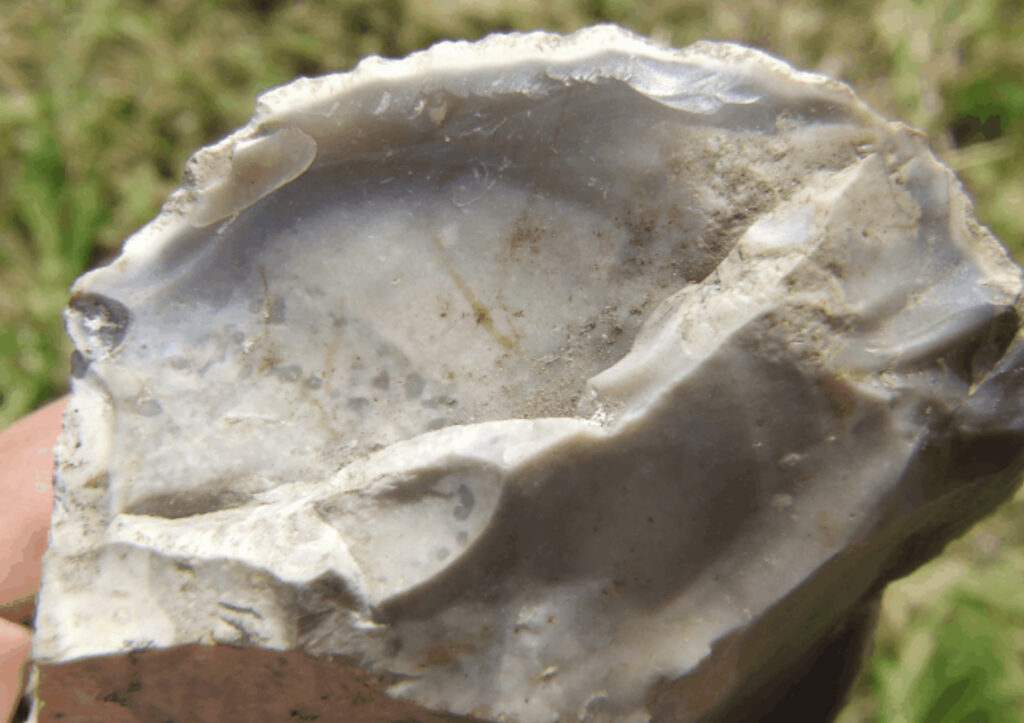
There really are millions of incredibly detailed works of art hidden in prehistoric flint and stone artefacts. Most of them lay there waiting to be found. Some works have been found and realized as worked stone but of unknown function and many recognized as tools, I believe that on closer inspection many of these stones will contain unrealized works of optical illusions and sculptured art. Elephant head sculptures are very common in palaeolithic stone tools, but are unrealized or ignored by many in the professional body.
I have learned so much about prehistoric man just by looking at a few stones, it’s all there, they all tell their own little story. The stone in the picture below has an excellent elephant head sculpture, gorilla, a springbok, horse, wolf, predatory cat, and ram. I believe that these stones were used as communication tools. There are suggestions that early man may have not been very vocal, and these stones could convey what you had for lunch or maybe what you wanted to go and hunt, or maybe silently convey what animals are nearby. They may have been used as ornaments or as a teaching aid. Or like Post-it-notes, or puppets.
Many of the pieces can be manipulated in the hand to produce a rolling display of their content. This can be done between thumb and forefinger in a single-handed fashion.
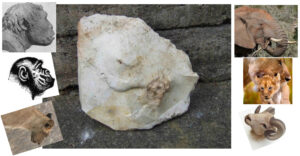
Ursel Benekendorff the vanguard of Prehistoric artworks, has recognized the iconography in my finds as clear and common motif’s that are repeated throughout her own extensive studies. The similarities between her own stone artwork finds, and my own, simply cannot be ignored. My visual interpretations (exclusively originally) were made without knowing the existence of this figurative symbolism, and any knowledge of Ursel’s amazing stone finds. In other words, we independently found artifacts depicting the exact same subjects, in the exact same poses, repeatedly, and in no way exclusively to just Ursel’s and my materials.
Work needs to be done in the British Professional Archaeology community, to educate sceptics and non- believers to the existence of these beautiful and ancient, communication tools.
These pieces will teach us more about our ancestors and their environment than any amount of gold coins.
For those of you in the wider community who wish to find similar stones I wouldn’t be surprised if you found one of these artworks in your own back garden. If you have at least one good elephant head in your stone and any other animal head form in profile, you may well have your own example. Most stones will not look anything like mine, many are in pebble form or other medium, some of the basic words can be found in every stone, them being elephant, ape, horse, springbok, rabbit, boar, wolf, cow, fish, lion, bear, and wizard! all in head profile, a whole bird, whole fish, whole buffalo/bison and the humps of whales and strutting gorillas, you would have to check Ursel’s site for any more! If you have flint blades and scrapers you may well already have some of these fascinating artworks, look for the ape profile in the blade. A large chip, then medium then a set of chips getting slowly smaller can signify an elephant head in your blade, these I believe are prolific but very few have noticed them.
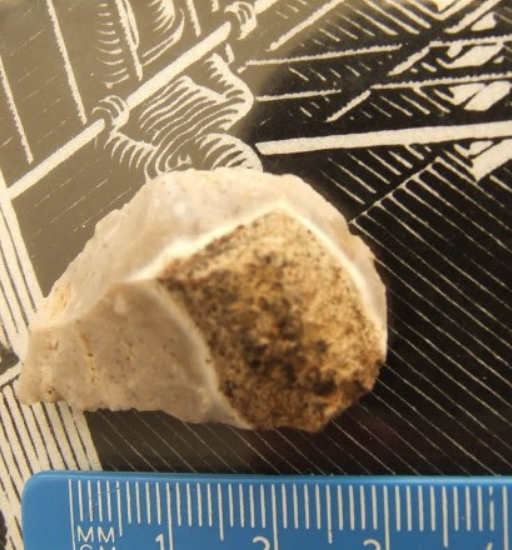
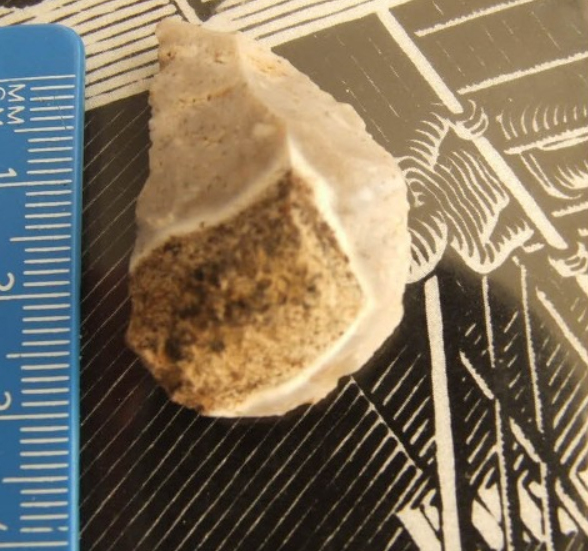
Prehistoric flint Nano sculpture
Yes, as if I had not rattled the bones of many an archaeologist already, I am now introducing a world exclusive, the discovery of incredibly detailed prehistoric nano-sculpture artworks. These small stones have all the bang of my polyglyphs but use an unknown technique to sculpture hair line ridges into flint. The stones look a little like the scaly effect caused by extreme temperature change in flint, in some areas. I have heard of a technique that uses heat to sculpt flint, am I just making this up? Maybe the theory of a scholar in history, way back?
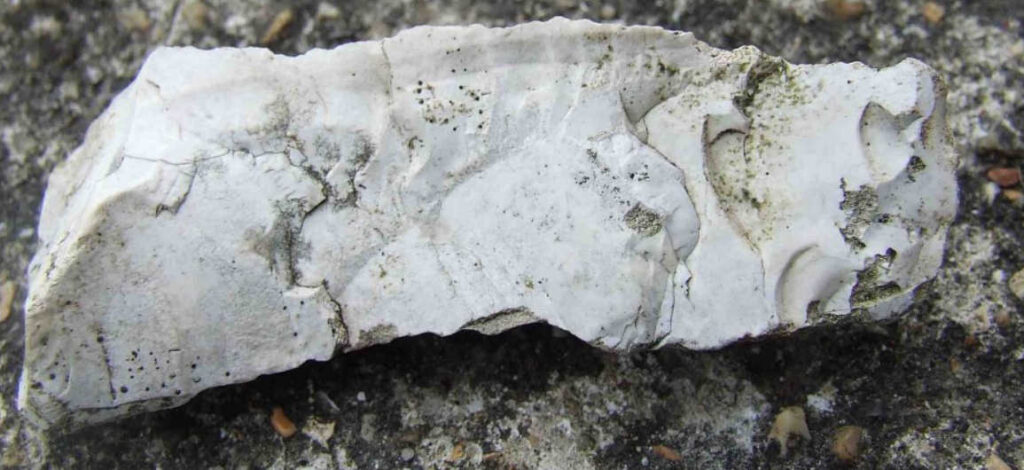
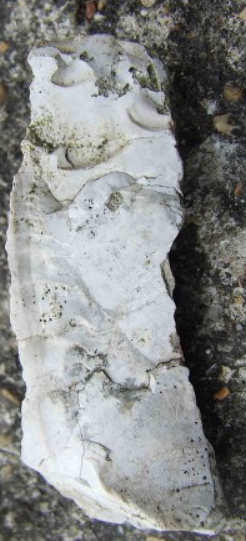
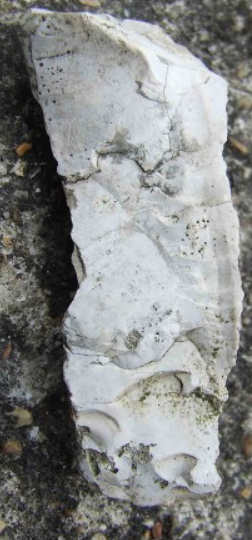
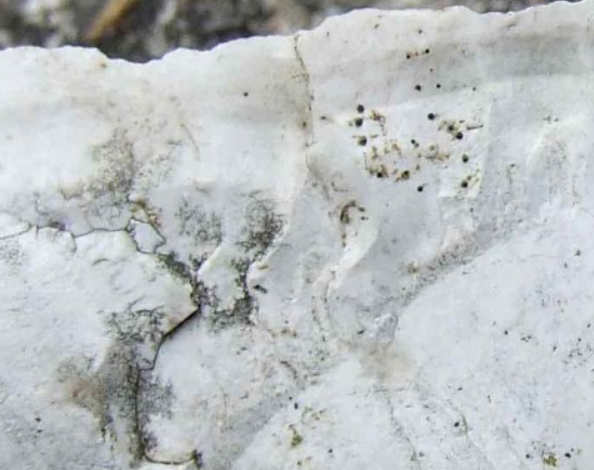
A jumble of face profiles that share and swap features.
A short story about Figure Stones.
Somewhere in the depths of time, maybe as far as a million years ago, in a savannah not too far from the present-day Newbury bypass, one of our possible prehistoric ancestors was busy developing his new I-Stone technology.
He had searched for suitable flints for weeks and weeks and had found few good candidates. He had been so particular; he knew the I-Stone had to be good if he was ever to have a chance at leading the hunt and gaining respect from his social group. He was very smart, almost a master of his environment, his napping skills were exceptional, and his third dimensional imagination had incredible visionary depth, seemingly absent from some modern humans, he could also somehow look into the depths of a stone and see and feel its inner beauty.
He sat on a rock and carefully inspected his works thus far, his bull elephant motif was clear, he had added the herd motive with a good mother and baby image, he had made an excellent snuffling honey badger animation, this one had worked well in his previous stones, and the group took to it with enthusiasm and had followed his forage instruction eagerly. His wolf was big and clear, but that glyph had become redundant when the majority of the group had learned how to howl like wolves last summer.
It was a rather odd stone at first sight, an odd shape, a bit scraggly round the edges, a few clear chips here and there and a fair amount of cortex left on it, looking closer it looked like it had experienced a bizarre and completely unnatural phenomena such as selective starch fracturing, freezing and heating repeatedly but only in localised areas, or like someone had put it in an industrial washing machine and neglected to add any clothes or water but only for a minute or two, and nano sea elephant head fossils inclusions.
But when you really started to look, all sorts of wonderful visages appear out of the stone, leaping springbok, strutting gorilla and growling lions. A whole herd of elephant’s roam, the baby elephant with curled trunk, as though eating. The snuffling honey badger illusion is eye candy, as you turn the stone slightly, the badger appears to look away and then back, as though it were foraging.
He is pleased with his works…..
A very long and unknown time after that and up until the present day, I really don’t have much of a clue about. But this I do know, somewhere in this story there are some elements of truth.
wtf?
Some of my original ramblings and findings about my prehistoric art finds from 2011/12. Only very slightly edited.
Ok, this all started for me in July 2011. I already had a keen interest in finding prehistoric flint tools, I had many recorded by professionals in the field and included in the Pas database. I had no idea that figure stones existed, though I had suspected that some rare flint tools may have an art or symbolic nature to them. I was pottering around on a hillside when I found the first of my now realized polyoxyglyphs. I soon became aware of the beauty and symbolism worked into this ‘hand perfect’ stone knife. I started to find more stones in the immediate area and had come to the conclusion I was on to something really big and undiscovered, the fact that some prehistoric stone tool’s had amazing artworks sculptured into them.
I did a little research on the internet, and found a site on portable rock art. There were stone’s very similar to mine detailed on the site, but these were found in Ohio. One stone caught my eye which had incredible similarity with one of my own, the stone was described as a white bison, and true enough a clear bison head is visible with a crystal grouping for an eye and a large predatory cat on the reverse. I realized when the bison head was turned sideways, it showed a clear elephant head just like one of my stones, i checked mine and found clear predatory cat, springbok and more, all in a package showing remarkable size, shape and content similarities.
Surely this was starting to get too big for me, I’m not a professional archaeologist, I’m just a man with an interest. How could I possibly convince the world of what appeared as an almost identical cultural link between the peoples of southern England and Ohio, USA. I felt like I had just invented the wheel almost but wasn’t quite sure what to use it for.
I started to contact people in the field, almost any professor of archaeology, flint Knapper, or website owners were my people of choice. I did some emailing and got few reply’s, most were knockbacks, some claimed my finds were due to fossil inclusions or starch fracturing or other natural causes and weren’t even tools or worked or artworks at all. Had these people lost their minds? or was it me?
Luckily a Mr James Harrod responded with some useful information, and gave me guidance in this field and sort of warned me of the difficulty, controversy and ignorance that surrounds the figure stone phenomena. Ken Johnston was also kindly enough to give some guidance.
I had another revelation, some of my stones contained animations, a pecking bird, a nodding horse, a nibbling rat and a foraging badger optical illusion. How could this be? How incredibly artistic were our ancestors? How intelligent must they have been to jigsaw these images into stones. I believe not even the best flint knapping artist of our time could possibly replicate these.
I needed to tell the world of my findings, so I made a few poor-quality YouTube video’s and started to email anyone and everyone who i could possibly find in any relevant field.
I was finally getting somewhere with this I thought, time past, I found a few more stones, and my Pas Flo was in town doing a lecture, so i payed him a visit with my best artwork stone tool’s. I was disappointed, there i was believing I had discovered my own prehistoric version of the Elgin marbles, and my Flo couldn’t really see the visages and wasn’t agreeing that they were even worked tools.
What was going on here? I was well known for my flint tool discoveries; I had a 100% positive record for identifying them and submitting them for recording purposes. Now it seemed everything I knew about flint had gone to waste, and i was suffering from a bizarre psychological condition that was making me see faces in stones, particularly elephant faces.
More time past, until recently (mid 2012), I was browsing a portable rock art site and became inspired again, so i decided to have another try at getting my stones and findings validated and evaluated. I emailed the British museum and sent interpretations of four of my stone finds. Again, these people couldn’t even seem to see the human agency in these stones, and of course that would scupper them, as far as being recognized artworks or communication tools.
I had seen a banner for the site of an Ursel Benekendorff and decided to have a good look at the site and email Ursel. I was amazed at the sheer number of works on the site, all grouped with like examples, and explanations for such things that conquered with my own conclusions. Ursel has now seen good pictures of a fair amount of my stones and kindly validated them for me.
My worked stones have multiple clear petroglyphs recognised as common motifs that reoccur throughout the works of one of the clear leaders in this field of study, Ursel Benekendorff.
I have come to many conclusions about my stones and there uses. I am not a professional archeologist, and this should be taken into account firstly. I am a smart guy with some very good stones though, so I may even have something to teach the experts.
Many stones are in semi-standard tool form and the rest don’t seem to have any conventional tool usage. Many also sit perfectly on a flat surface to display their beauty. And other’s stand up on their own. This would suggest mantles and sideboards maybe. The stones were no doubt on display if not tool’s, or tool’s being used. This may have worked like post it note’s or fridge magnet’s, to let others know what you were up to.
Many of the stones show early man images and ape images, there is a clear ‘man’ distinction, this may put early man in England with neanderthal close by.
The sheer number of elephants on theses stones may suggest something, some of my stones have an elephant only theme, some different types and sizes of elephant being shown, these stones could also be used to show the direction the elephants are facing and the possible temperament of the animal. The three different sizes of elephant on a good number of these stones could also show a herd or used to show how far away your elephants are, or even pick out which elephant you wanted for lunch. This tradition continues, but decays in the Mesolithic period with mammoths being hunted. I cannot say much about Mesolithic stones, as I only have a few of these. The Mesolithic blades are usually of the same black glassy flint, and ripples in the stones are used to define ear and trunk detail, and flaking is used for the main shape, these stone’s i believe will come to life on a dark night in front of a fire, the highlights on the stone catching the light, to make it look as though the creature was there in the shadows moving around. The Mesolithic peoples are not relying on inclusions in their artworks as much as the older peoples, and mainly use the way they work the material to make their details.
There are some very standard glyphs and these seem almost global. Many of ‘my’ recognised glyphs have also been discovered and proven by others in the field, most notably, Ursel Benekendorff, Jan van Es and Jan Evert Musch, I suggest study of their works for a more academic insight into this field. Only this morning I discover my whole buffalo/bison glyph is already recognised, discovered and documented by Jan Evert Musch.
There seems to be a very long history to this culture dating back to 3 holes in a pebble. I have 2 good pebble’s that have a few of the glyphs. One shows, elephant, buffalo, wolf, elephant, short nose elephant. The other shows elephant, gorilla, cat, wizard. and 2 possible unknowns.
The white stone’s I have shown so far seem to be at the height of this culture and its skill, and they probably are the best examples of their kind in this field, realised or found so far, that I have seen anyway. Or maybe we just have a family of exceptionally visionary artists.
I believe there are many more out there sat in museums basements unrealised as anything apart from a worked piece of stone. If people looked for elephant faces in their flint collections, I bet you ten to one, they will find them.
I guess the age of the white stone to between 100,000 and 150,000 bp. Unless there was an incredibly high culture deep in the past that produced these stones, and all other examples are just cheap imitations of this culture, then I’m guessing my dates are quite good. The loss of this culture and written language maybe due to vocal improvement in early man, and paint technology.
I have one very unusual stone, which looks nothing more than a gnarly flint at first pass. And there are but a few parts that show standard napping. This stone also appears to have all the usual glyphs but written onto the stone in an entirely different way, by the colour, inclusions and remaining cortex on the stone, I’m going to stick my neck out here and say, the stone has had unorthodox works done that to me at least are unexplainable.
Other problems arise when you look at some of the natural inclusions in these stones. Example 1, has a nice eye inclusion, a fossil ‘thumb grip’ inclusion, chalk mane inclusion with inset ear, which also aids comfort to your remaining fingers and grip, and grey elephant colour inclusion inset to the large elephant on the back. Part of this grey elephant is smooth, part is roughed up, for grip, for the palm and lower thumb.
I find it hard to believe that anyone of those inclusions is a happy accident, maybe the grey elephant. But it begs belief that all those inclusions had to have been realised to make the finished piece, as a comfortable, practical prehistoric artwork in the form of a tool.
No napper can even start to make example 1, because he will never ever find a suitable stone! That is a brash statement, and I hope some bright napper out there can replicate stone example 2, the rat head side only, as other areas of the stone rely on texture inclusions for grip.
And he would need his x-ray equipment. Most of these flints seem to have a film of calcite over them which may be hiding the clarity of the flint under it. And that may in some way account for the eye being on example 1. Iron seepage is also present, this may give some age clue?
Paint may also have been used to improve the stones appearance; I believe I may have some evidence of this in the form of moss. Moss seems conveniently placed on some of my stones, almost as though I washed the stones but left some moss in convenient places to make the stones look better, this is not the case at all! That moss may have been encouraged or discouraged from growth by substances being put on those areas of the stones. I know this is in no way conclusive. Just maybe that moss growth is highlighting detail that is now lost.
Elephant heads in flint may have lost their shape and detail over time, but still continued in tool working tradition.
This may explain possible elephant stylisation in tools from a much later period, i.e., the knife of the Amesbury Archer, Which has much in common with stone example 1.
Another revelation, possibly seen in 3 stones, is what looks like bridal ware, horse harness, bit’s etc. I have no idea when early man first domesticated horses, but if proven this may put it back 1000’s of years. It may sound a bit silly thinking about it, as I have not seen any riders mounted yet, in my stone artworks.
My original conclusions and thoughts on the subject have changed a great deal in the last ten years (2021), although my evidence and scientific proofs have increased one hundred-fold many of my original discoveries show an evolution of my knowledge in this field. For a deeper understanding of my views, evidence, proofs, and conclusions I suggest reading my blog: – Eoliths: Portable Rock Art and Figure Stones